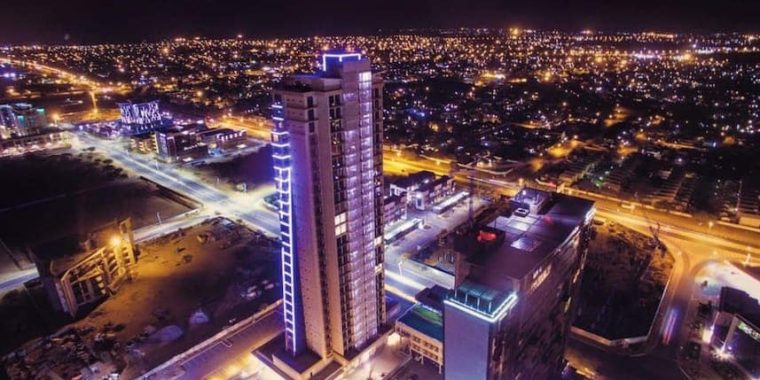This article was first published in Mmegi Newspaper on 26th June 2020. Due to the announcement of a $250 million loan from World Bank to Botswana to fund the ERTP, it is worth revisiting this article.
Earlier this week we received what is supposedly a draft version of a policy document called The Economic Recovery and Transformation Plan being worked on and lead by the Ministry of Finance and Economic Development (MFED). This document is meant to be the roadmap by Government to stimulate and shock the economy out of the worst economic crisis Botswana has ever had and was prepared by a committee lead jointly by the Governor of the Bank of Botswana and the Permanent Secretary of MFED with inputs from various entities such as BOB, MITI, BIDPA and UB amongst others. This policy document acknowledges the devastation to productive capacity and subsequent loss of income from companies and individuals especially in sectors such as mining, agriculture, trade, hotels and restaurants and the informal sector and tries to provide solutions to jumpstart the recovery of the country.
Before COVID19 hit, Botswana was already on a transformation path with Vision 2036, NDP11 and other Transformation policies such as Citizen Economic Empowerment already being worked on. What this current ERTP aims to do is speed up the implementation of these policies. Its main objectives are to support restoration of economic activities and incomes, facilitate growth and accelerate transformation agendas in bid to take Botswana to high income status by 2036. The ERTP would try to address the challenges as noted in the NDP11 midterm review of declining economic growth, a deteriorating fiscal position, the need to diversify exports and the economy, mitigating uncertainties around the diamond industry’s future and high unemployment.
The basic principles that drove the ERTP are to tackle issues in the short, medium and long term by using a counter cyclical stimulus to replace lost activity whilst staying aligned with existing aspirations to accelerate the transformation agenda. The policy also had to be cognisant of fiscal constraints I.e. ensuring maximum effectiveness, sustainability and to avoid direct government funding where possible. There should also be scope to accelerate privatisation and capacitate private sector whilst ensuring we build economic competitiveness I.e. reduce costs of production, improve efficiency and develop research and innovation capacity in order to develop productive capacity. The prescribed policy responses basically would fall into 4 categories being Regulatory and legal reform, Policy actions, redirection of recurrent spending and Development projects.
Below are a select few sectors and actions envisioned by the ERTP:
Agriculture
Covid19 has heightened need and urgency for food security. Envisioned projects include creating horticulture clusters in Selebi Phikwe and Shashe and possibly Masama and Mogobane. This would entail building nfrastructure such as roads, housing, internet etc to encourage production in those areas. Food grain production in areas such as Barolong farms, Pandamatenga and Tuli Block to be assisted especially with funding via NDB and CEDA. Speeding up of the liberalisation of the beef sector and setting up of a Meat Regulator would be prioritised.
Tourism
Botswana’s dependence on foreign tourists has proved disastrous and the promotion of local tourism is definitely necessary. This includes policies to speed up unexploited sites and reduce pressure on Northern Botswana by developing other tourism destinations. Ease of regulation to promote agro tourism is also prioritised.
ICT
In line with Botswana’s aspirations for digital transformation and spring boarding into the 4th Industrial Revolution, ERTP aims to revolutionise the ICT landscape by creating an enabling environment for development. The ERTP does recognise past failures especially in the execution of eGov and implemention of laying enabling infrastructure. These would hence be prioritised with a view that these would revolutionise service delivery in education, health, retail, cashless society, tax collection etc. Government is also looking at introducing a Digital biometric Omang and digitizing Land management which would have resultant major implications for developing a supporting industry and curbing unemployment.
Other sectors touched on in the document include education, mining, manufacturing, health, the informal sector, the creative sector and also setting up a function to improve Botswana’s implementation, monitoring and evaluation capacity to ensure successful implementation.
One of the biggest challenges that will face the implementation of the policy is how to fund it. COVID19 responses and loss of revenue have already created a P20 billion deficit with the ERTP expected to need another P20 billion to fund it sufficiently. Domestic borrowing is currently at 7.5% of GDP with legal limit of 20% allowing government to have the ability to borrow P15 billion from domestic market with another 15 billion that could be sourced from insurance companies, pension funds and banks. The government is also considering a possible draw down of P5billion from Foreign reserves with a potential also to seek funding from development funding institutions. Speeding up of getting our ducks in a row could also create potential to fund some projects via PPPs. Similar to what was mentioned in the 2020 Budget Speech, consideration must also be given to adjusting taxes and levies.
So what are my initial reactions to the ERTP?
Firstly I’m impressed by the speed and urgency this issue has been treated with. This does show that the Government is trying to stay ahead of the curve of the possible destruction looming in our economy. That said, the ERTP is effectively nothing new (which is not a bad thing as its clear its a consolidation of existing plans) meaning it does inherit some of the blind spots from original documents used to put it together. I do however welcome the approach of consolidation because that makes it simpler for stakeholders to implement even if does bring questions of how existing transformation committees will feed into it.I do however hope that since the document is supposedly a draft, there will be ample opportunity to do proper consultation and feedback. The document is very high level and lacks in detail, broadness and fresh thinking so I do hope individual industries will be able to design more detailed documents to avoid a top down and ensure buy in of different stakeholders. Some of the industries and interventions were very thin e.g. sections on the creative industry, improving Research & Development, SME development and improving procurement. Another big blind spot was it wasn’t clear how Citizen Economic Empowerment will be encouraged by the policy though it is mentioned as one of the major objectives. Lastly and most worryingly, the question of implementation remains. No one ever doubts the brilliance our government has in policy development. Unfortunately we do not have a great track record in implementation and change management though I choose to take a positive outlook this time as COVID19 has forced us to check our complacency. Overall, the policy is a good starting skeleton that will benefit from individual stakeholders adding meat to its bones in the coming months.



